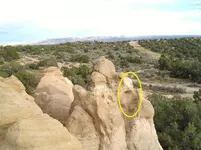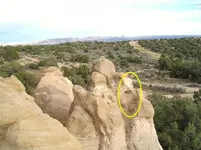please ignore the previous post, it is a hijack attempt, we need NO pareidolia or graffiti interpetation on this thread, DO NOT POST HERE AGAIN or I will report you to the moderators...YOU ARE NOT WELCOME HERE with your erroneous suppositions ~!
-------------------------------------------------
back to the thread...
--------------------------------------------------
Is Philippines ancient name is ophir?
"Where is Tarshish and Ophir"
During the early period of European colonization, the Biblical lands of Tarshish and Ophir, or Tarsis and Ofir, as they were called, held the imagination of European explorers. Not only was it believed that the "lost tribes" of Israel were to be found in these lands, but also untold wealth. To these kingdoms King Solomon and King Hiram of Tyre sent ships for trade that "brought from Ophir great plenty of almug trees, and precious stones," (I Kings 10:11). Concerning Tarshish it is written: "For the king's ships went to Tarshish with the servants of Hiram: every three years once came the shop sof Tarshish bringing gold and silver, ivory, and apes, and peacock." (II Chronicles 9:21)
In Samuel Purchas's well-known travel compendium Purchas His Pilgrim, he devotes the entire first chapter to a discussion of Tarshish and Ophir. In particular, he argues strenously that it is beloved Britain and not Spain that deserved the title as the modern Tarshish and Ophir. Curiously, in Careri's journal of his visit to the Philippines, he mentions that he would not go into the argument raging in Europe at that time over whether the Philippines was originally populated by the descendants of Biblical Tarshish.
In modern times, scholars have attempted to relate Tarshish and Ophir with a number of areas, none of which include the Philippines. However, things were different in Europe prior to the discovery of the Philippines. There, they believed that Tarsis and Ofir were some lands far to the east of biblical Israel. Their reasoning was actually quite logical. King Solomon built the port from which ships departed for Tarsis and Ofir at Ezion-Geber on the coast of the Red Sea. The return journey took about three years, so obviously the location must be somewhere far to the East. In modern times, some scholars have tried to suggest that Solomon's navy circumnavigated Africa to reach the Mediterranean, but the seafaring Europeans of those times would not consider such nonsense. Tarsis and Ofir were unknown lands beyond the Golden Chersonese of Ptolemy. Their discovery would undoubtedly bring untold wealth and great fame in the minds of the people of those times.
But what, one may ask, has this to do with the Philippines? The truth is that the search for Tarsis and Ofir was directly related to the "discovery" of these islands by Magellan!
______________________________________
Magellan and the Search for Ophir
Magellan's contemporary, Duarte Barbosa, wrote that the people of Malacca (in modern Malaysia) had described to him an island group known as the Lequios whose people were as "rich and more eminent than the Chins (Chinese)," and that traded "much gold, and sliver in bars, silk, rich cloth, and much very good wheat, beautiful porcelains and many other merchandises."
However, Barbosa was not the only one to mention the Lequios during Magellan's time. About a decade after Magellan's voyage, Ferdinand Pinto had wrote in his journal of the experience of his crew and himself after being shipwrecked on the Lequios! Pinto was traveling through the Malay Archipelago at the time and he describes the Lequios islands as belonging to large group of islands many of which were rich in gold and silver. He mentions that at that time the Portugese were familiar with Japan and China, and also with the island of "Mindanaus" or Mindanao, so the Lequois islands must have been somewhere between these two areas. Furthermore, Pinto even goes as far as to give the exact latitude of the main Lequios island. He states that is was situated at 9N20 latitude and that the island was on a merdian similar to that of Japan.
Now, in Magellan's time all exploration was done by latitude sailing and dead reckoning, as no navigational clocks were in use. Latitude sailing required fixing one's latitude precisely by means of an astrolabe. Longitude could only be approximated roughly by using a patent log to track the distance the ship has travelled in any particular direction. When Magellan began to suspect he was nearing the region of the Moluccas he deliberately steered on a north course and then turned westward at a latitude of 13 degrees North according to both Pigafetta and Albo. Pigafetta states that the reason was to get near the port of "Gaticara" which was the Cattigara mentioned by Ptolemy. In the book, Magellan's Voyage around the World, the author, Charles E. Nowell, offers another possible reason for Magellan steering so far to the north of the Moluccas. He notes that Magellan himself had rewrote part of Barbosa's book referring to the Lequios, and in his version Magellan substituted "Tarsis" and "Ofir" for the world "Lequios."
Although these lands are not mentioned in Magellan's contract, less than six years after his voyage, Sebastian Cabot signed a contract with Spain which did have as one of its objectives the "lands of Tarshish and Ophir." Magellan had been to Malacca himself, and probably many have heard of the community of Filipino workers and merchants that lived there under the protection of the king of Malacca. Probably many of you already know of the theory that Black Henry, the slave Magellan purchased at Malacca, may have belonged to the Filipino community of Malacca as he was able to speak with the natives at Limasawa. Whatever the case, we know from his own pen that Magellan thought the Lequios islands might be the same as the Biblical Tarsis and Ofir, and it may be that his idea of the position of the Lequios was partly shaped by Barbosa's book, and partly by information he may have received from Filipinos in Malacca. Was the fact that Black Henry was able to converse with the people living at the latitude given by Pinto (but not with the people of Samar or Leyte) a coincidence, or something planned in advance from information gleaned in Malacca?
Even after their discovery, many still regarded the Philippines, rich in gold and silver, to be the same as ancient Tarsis and Ofir. Father Colin, referred to them as such in the early 1600's and even at the turn of the century, the Philippine historian Pedro Paterno, still claimed that the Philippines were really Tarshish and Ophir! Whatever one thinks of these claims though, the search for the Biblical El Dorado appears to have played an important role in the European discovery of the Philippines.
Chryse, the "Golden One," is the name given by ancient Greek writers to an island rich in gold to the east of India. Pomponius Mela, Marinos of Tyre and the Periplus of the Erythraean Sea mention Chryse in the first century CE. It is basically the equivalent of the Indian Suvarnadvipa the "Island of Gold."
Josephus calls it in Latin Aurea, and equates the island with biblical Ophir, from where the ships of Tyre and Solomon brought back gold and other trade items.
Chryse is often coupled with another island Argyre the "Island of Silver" and placed beyond the Ganges. Ptolemy locates both islands east of the Khruses Kersonenson the "Golden Peninsula" i.e. the Malaya
--deleted--ula. North of Chryse in the Periplus was Thin, which some consider the first European reference to China.
In addition to gold, Chryse was also famed for having the finest tortoise shell in the world according to the Periplus. Large ships brought trade goods back and forth between Chryse and the markets at the mouth of the Ganges.
Chin-lin
In ancient Chinese literature, a mysterious region beyond their southern border in Annam was known as Chin-lin "Golden Neighbor" and the Southeast Asian border was also called the "Golden Frontier."
When China invaded Annam (northern Vietnam) in the first century BCE, the kingdom of Champa fortified villages along the old caravan trail. This path became Route Colonial 9 during the French colonial period, and it was used by the Americans to build the McNamara Line of fortified bases during the Vietnam War.
With this fortified line, the rugged Central Highlands and a policy of constant piracy, the Champa kingdom held the Chinese at bay for a thousand years. After the fall of the Chin dynasty in the 5th century, Cham raids on Tongking became so frequent that the governor appealed to the emperor for assistance. A war of attrition between China and Champa began that lasted until the rise of the T'ang dynasty.During this time though, China was well aware of the golden lands far to the south. The Buddhist pilgrim I-Tsing mentions Chin-Chou "Isle of Gold" in the archipelago south of China on his way back from India.
Zabag and Wakwak
The kingdoms of Zabag and Wakwak, famed among the medieval Muslims as rich in gold, referred to the eastern islands of the Malay archipelago i.e. the Philippines and Eastern Indonesia.
Zabag was based in what would later become the kingdom of Lusung. In this sense, the Philippines fits the bill as a gold-rich realm. The country has consistently ranked second in the world behind only South Africa in gold deposits per land area. The Philippines has historically been the largest producer of gold in Asia despite its relatively small size and the fact that until 1980 most gold was obtained only through small alluvial deposits.
Although some ancient gold artifacts have been found in this region, they don't match the age suggested by linguistic reconstruction. Gold may have been mostly handed down from generation to generation rather than being used as a burial good item.
In about the second century CE, there arose a practice of using gold eye covers, and then, gold facial orifice covers to adorn the dead resulting in an increase of ancient gold finds. More than a millennium later, the popularity of dental gold to decorate the teeth significantly increased the amount of gold found at archaeological sites.
When the Spanish came they discovered an abundance of gold used among the people of the Philippine islands. Here are some relevant quotes:
Pieces of gold, the size of walnuts and eggs are found by sifting the earth in the island of that king who came to our ships. All the dishes of that king are of gold and also some portion of his house as we were told by that king himself...He had a covering of silk on his head, and wore two large golden earrings fastened in his ears...At his side hung a dagger, the haft of which was somewhat long and all of gold, and its scabbard of carved wood. He had three spots of gold on every tooth, and his teeth appeared as if bound with gold.
--- Pigafetta on Raja Siaui of Butuan during Magellan's voyage
For brass, iron and other weighty articles, they gave us gold in exchange...For 14 pounds of iron we received 10 pieces of gold, of the value of a ducat and a half. The Captain General forbade too great an anxiety for receiving gold, without which order every sailor would have parted with all he had to obtain this metal, which would have ruined our commerce forever.
--- Pigafetta on gold trade in Cebu
Sailing in this manner, for some time, in 16° of north latitude, they were obliged by continual contrary winds, to bear up again for the Philippine islands, and in their way back, had sight of six or seven additional islands, but did not anchor at any of them. They found also an archipelago, or numerous cluster of islands, in 15 or 16 degrees of north latitude, well inhabited by a white people, with beautiful well-proportioned women, and much better clothed than in any other of the islands of these parts; and they had many golden ornaments, which was a sure sign that there was some of that metal in their country.
--- Antonio Galvão in 1555 describing the journey of Bartholomew de la Torre in 1548
"...the ore is so rich that I will not write any more about it, as I might possibly come under a suspicion of exaggerating; but I swear by Christ that there is more gold on this island than there is iron in all Biscay."
--- Hernando Riquel et al., 1574
In this island, there are many gold mines, some of which have been inspected by the Spaniards, who say that the natives work them as is done in Nueva Espana with the mines of silver; and, as in these mines, the vein of ore here is continuous. Assays have been made, yielding so great wealth that I shall not endeavor to describe them, lest I be suspected of lying. Time will prove the truth.
---
Hernando Riquel et al. on island of Luzon, 1574
There are some chiefs in this island who have on their persons ten or twelve thousand ducats' worth of gold in jewels--to say nothing of the lands, slaves, and mines that they own. There are so many of these chiefs that they are innumerable. Likewise the individual subjects of these chiefs have a great quantity of the said jewels of gold, which they wear on their persons--bracelets, chains, and earrings of solid gold, daggers of gold, and other very rich trinkets. These are generally seen among them, and not only the chiefs and freemen have plenty of these jewels, but even slaves possess and wear golden trinkets upon their persons, openly and freely.
--- Guido de Lavezaris at al., 1574
About their necks they wear gold necklaces, wrought like spun wax, and with links in our fashion, some larger than others. On their arms they wear armlets of wrought gold, which they call calombigas, and which are very large and made in different patterns. Some wear strings of precious stones--cornelians and agates; and other blue and white stones, which they esteem highly. They wear around the legs some strings of these stones, and certain cords, covered with black pitch in many foldings, as garters.
-- Antonio de Morga, 1609
"... the natives proceed more slowly in this ,and content themselves with what they already possess in jewels and gold ingots handed down from antiquity and inherited from their ancestors. This is considerable, for he must be poor and wrethced who has no gold chains, calombigas, and earrings."
-- Antonio de Morga, 1609
The Portugese explorer Pedro Fidalgo in 1545 found gold so abundant on Luzon the inhabitants were willing to trade two pezoes of gold for one pezo of silver.
When the Portuguese first arrived, most of the gold traded into Brunei came from Luzon. That island was known as Lusung Dao or "Golden Luzon" to the Chinese who also traded for gold in this region.
References:
Legeza, Laszlo. "Tantric Elements in pre-Hispanic Philippines Gold Art," Arts of Asia, July-Aug. 1988, pp.129-136. (Mentions gold jewelry of Philippine origin in first century CE Egypt)
Peralta, J.T. "Prehistoric gold ornaments from the Central Bank of the Philippines," Arts of Asia 1981, no.4, p.54.Villegas, Ramon N. Ginto: History Wrought in Gold, Manila: Bangko Central ng Pilipinas, 2004.
Mines Dating Back to at Least 1,000 B.C. Have Been Found in the Philippines
According to De Morga: (1,000 B.C. is when King Solomon's navy of ships going to Ophir for gold)
Mines dating back to at least 1,000 B.C. have been found in the Philippines. When the Spanish arrived the Filipinos worked various mines of gold, silver, copper and iron. They also seemed to have worked in brass using tin that was likely imported from the Malay Peninsula. The iron work in particular was said to be of very high quality in some cases, and occasionally in some areas, even better than that found in Europe.
When the Spanish arrived, the Philippines was so gilded with gold that most of the gold mines had been neglected. "... the natives proceed more slowly in this, and content themselves with what they already possess in jewels and gold ingots handed down from antiquity and inherited from their ancestors. This is considerable, for he must be poor and wrethced who has no gold chains, calombigas, and earrings."
As the missionary Francisco Colín wrote in 1663:
In the punishment of crimes of violence the social rank of the slayer and slain made a great deal of difference. If the slain was a chief, all his kinsfolk took the warpath against the slayer and his kinfolk, and this state of war continued until arbiters were able to determine the amount of gold which had to be paid for the killing… The death penalty was not imposed by public authority save in cases where both the slayer and slain were commoners, and the slayer could not pay the blood price.
Blair and Robertson, Vol. II, p. 116.
Legazpi describes one of the "Moro" pilots captured from Butuan:
"...a most experienced man who had much knowledge, not only of matters concerning these Filipinas Islands, but those of Maluco, Borney, Malaca, Jaba, India, and China, where he had had much experience in navigation and trade."
According to Pigafetta:
However, things seem to already diminished from Pigafetta's time:
"On the island [Butuan] where the king came to the ship, pieces of gold as large as walnuts or eggs are to be found, by sifting the earth. All the dishes of the king are of gold, and his whole house is very well set up."
Pigafetta goes on to describe the huge gold ornaments, gold dagger handles, tooth plating and even gold that was used to decorate the outside of houses! On the gold work of the Filipinos is this description of the people of Mindoro: ( copied by Israel recorded in 1Chronicles 29:4 Even three thousand talents of gold, of the gold of Ophir, and seven thousand talents of refined silver, to overlay the walls of the houses withal)
"...they possess great skill in mixing it [gold] with other metals. They give it an outside appearance so natural and perfect, and so fine a ring, that unless it is melted they can deceive all men, even the best of silversmiths."
Arts of Asia, Jul-Aug 1988, p. 131
Arts of Asia 1981, no.4, p.54
Apparently, even foreigners desired Filipino gold products. Recent discoveries show that gold jewelry of Philippine origin was found in Egypt near the beginning of the era. These finds are mentioned in Laszlo Legeza's "Tantric elements in pre-Hispanic Philippines Gold Art," (Arts of Asia, Jul-Aug 1988, p. 131) along a discussion of Philippine Tantric art. Some outstanding examples of Philippine jewelry, which included necklaces, belts, armlets and rings placed around the waist, are showcased in J. T. Peralta's "Prehistoric gold ornaments from the Central Bank of the Philippines," Arts of Asia 1981, no.4, p.54.
Luzon Empire
LUCOES or LEQUIOS ISLANDS
Luzon Empire according to Chinese historians
Luzon Empire (1279-1571 AD) was an ancient empire once located around Manila bay region of the Philippines. Its capital was Tondo, its territories covered most of what is now Central Luzon, extending from delta region that surrounds Manila Bay, all the way into the interior along head waters of the surrounding rivers in the province of Pampanga, Bulakan (covered part now Rizal).
The history of Song Dynasty was compiled under Mongol Prime Minister Toktoghan in 1345 AD. In it the Mongols recount tha final and complete destruction of Nan song (southern song Empire) (1127-1279 AD), where in 1279 AD the Mongol Fleet crushed the Nan Song Navy at the Naval battle of Yamen. The loyal Minister of the Left Liu Xiufu committed suicide with last Na Song Emperor, the children Songdi Bing rather than be captured by the Mongols.
The Grand Admiral Zhang Shijie escaped with his grand armada but were later annihilated by a typhoon while crossing the seas.
Alternative source refute the accounts of the destruction of Zhang Shijie's grand armada as nothing more than Mongol propaganda since there were no eyewitness accounts of its destruction nor were there traces left of its remains. For most historians, the fate of Zhang shijie and his grand armada remains a mystery.
Contemporary Chinese historians in Guangdong are now even questioning the Mongolian accounts regarding Emperor Bing's death. Even though Mongol sources claimed that the corpse of the last emperor has been found washed ashore along the coast of Shenzen, his actual grave is yet to be found. Cantonese folklore expressed in the ttraditional Cantonese opera narrates an alternative account where the loyal Minister Liu Xiufu tricked the Mongols by committing suicide with his own son disguised as the young emperor. The real emperor was said to have been smuggled out of the scene of battle by Grand Admiral Zhang Shijie, who will eventually return to redeem the empire from the invaders. The Travel of Marco Polo also recounts the escape of the last song emperor across the ocean. Zhang Shijie's fleet and the last song emperor may have escaped to pre-colonial Philippines and established the Luzon Empire or the 'Lesser Song Empire".
Despite the conjectures regarding its origins, the Ming Annals are clear on the actual existence of the Luzon Empire. It records that in 1373 AD, the Luzon Empire sent its first among the many succeeding diplomat mission to the Great Ming Empire (1368-1644 AD), accompanied by the embassies of India's Chola Empire.
The Ming chroniclers added the character for "kingdom"of "empire" (pinyin: GuU) after Luzon (Lusong), indicating that it was once an independent and sovereign kingdom. Her rulers were acknowledged as king and not mere chieftains. The Ming empire treated the Luzon Empire more favorably than Japan by allowing it to trade with china once verey two years, while Japan was only allowed to trade once every 11 years.
Luzon empire flourished during the latter half of the Ming Dynasty when China closed its doors to foreign trade. Foreigners were forbidden to send trade missions to China. Chinese merchants were likewise forbidden to trade beyond the borders of the Ming Empire. Yet clandestinely, merchants from Guangzhou and Quanzhou regularly delivered trade goods to Tondo. Luzon merchants then traded them all across Southeast Asia and were considered "Chinese" by the people they encountered.
The Portuguese who came to Asia much earlier than the Spaniards recorded their encounter with the inhabitants of the Luzon empire and called them 'Lucoes'. The Portuguese records that the Luzon Empire played an active role in the politics and economy of the 16th century Southeast Asia, especially in controlling the trade traffic at the Straits of Malacca.
The Luzon Empire's powerful presence in the trade of Chinese goods in 16th century East Asia was felt strongly by Japan, whose merchants had to resort to piracy in order to obtain much sought after Chinese products such as silk and porcelain. Famous 16th century Japanese merchants and tea connoisseurs like Shimai Sou
--deleted--su and Kamiya Soutan established their branches here. One famous Japanese merchant, Luzon Sukezaemon, went as far as to change his name from Naya to Luzon.
Tondo (Tungdu in Cantonese) or the 'Eastern Capital' has always been the traditional capital of the Luzon Empire. Its traditional rulers were the lakandula (Kapampangan: 'Lord of the Palace'). During the reign of Paduka Sri Baginda Rajah dan yang di Pertuan Bulkiah (1485-1521) the Kingdom of Brunai decided to break the Luzon Empire's monolpoly in the China trade by attacking Tondo and establishing the city state of Mainl'l, as a Burneian satellite. Anew dynasty under tha Salalila was established in Manila to challenge the House of Lakand'l, in Tondo.
When the Spaniards arrived in 1571 AD, the unity of the Luzon Empire was already threatened by the uneasy alliance of the Three Kings of Luzon: the Rajah matanda of Sapa, the Lakandula of Tondo and Rajah Suliman III, the 'rajah muda' or "crown prince" of Mainl'l and 'laxamana' or "grand admiral" of the Macabebe Armada. Powerful states like Lubao, Betis and Macabebe become bold enough to challenge the traditional leadership of Tondo and Mainl'l. the Spaniards took advantage of the chaos, played favourites with one ruler and pitted them against the other.
Rumor has it that the Spaniards had poisoned the Rajah Matanda of Mainl'l, so as to win the support of Lakandula of Tondo. Disregarding the legitimacy of Rajah Suliman III as 'rajah muda', the Spaniards installed the child Rajah Bago as the new king of Mainl'l.
In 1571, Rajah Suliman III, the 'rajah muda' of mainl'l and laxamana of the Macabebe armada, challenged the Spaniards to a naval battle at the estuary of bangkusay. The Spaniards were able to crush Rajah Suliman III and his Macabebe armada due to the lack of support from the other rulers of the empire. The Luzon Empire was quickly overtaken by the Spaniards. Its territories were carved out and distributed as spoils among themselves. The province of Pampanga was the first Spanish colonial province carved out of the Luzon Empire and the people who spoke one language from Tondo to the rest of Pampanga are now called Kapampangan.
After the collapse of the Luzon empire, the Spaniards were finally able to create their first colony in Asia, the Philippines, named in honor of Spanish King Philip II of Spain. The name Luzon was given to the entire northern Philippine island, in memory of the former Luzon empire.
The Luzon Empire was said to have finally ended in 1571 AD according to Spanish records.Yet the fortified cities of Lubao and Betis continued to thrive as independent principalities of the Luzon Empire till 1572 AD.
In 1575 AD,the Spaniards executed the child king Rajah Bago and his cousin Lumanlan. The Lakandula of Tondo also died in the same year.
In 1586 AD, the Spaniards crushed the revolt of former nobles of the Luzon Empire, in the province of Pampanga. The revolt was based in Candaba under the leadership of Don Nicolas Mananquete and Don Juan de Manila.
In 1588 AD, the Spaniards crushed the revolt of the nobles of the Luzon Empire in Tondo. It was led by the descendants of the Lakandula and their kinsmen with the assistance of Japanese merchants. Many of them executed or exiled and their properties confiscated.
In 1590 AD, the King Sattha of Cambodia sent two elephants to the "King of Luzon" through his Portuguese ambassador and requested the Luzon Empire's assistance in their battle against Siam. In the same year the "lords" of the Luzon Empire were said to have been corresponding with theTaikou-sama of Japan, Toyotomi Hideyoshi, begging for assistance to help liberate the Luzon Empire from Spaniards. Hideyoshi responded by sending a letter to the Spanish Governor of Manila, demanding that the Spaniards leave Luzon quietly or else face a full scale invasion that would force them out. I'll prepared for a Japanese invasion, the Spanish Governor of Manila decided to appease Hideyoshi by sending gift from the Americas, including the two elephants sent by the King of Cambodia. The rulers of the old Luzon Empire who cooperated with the Spanish overlords became the principalia of the new Spanish colony. To this day, their descendants still play an influential role in Philippine society.
The study of Philippine history has for many years been Eurocentric, most Philippine historians have gone as far back at the earliest Spanish records but have failed to look into the archives of neighboring countries, such as Brunei, Indonesia, Cambodia, Thailand, Vietnam, Japan and China. Their dependence on the English language limits the majority of Philippine historians from accessing volumes of materials written in Chinese and other Asian languages. As a result, the history of the Luzon empire remains mythical in their scholastic psyche and still virtually non-existent in mainstream Philippine History.
Reference:
(History of the Song) original Chinese text:
http://www.yifan.net/yihe/novels/history/songshiytt/sshi.HTML
(Ming Annals) original Chinese text:
http://www.yifan.net/yihe/novels/history/msqztyz/ms.HTML
(Shinsho Taiko-ki) by (Yoshikawa Eiji)
Giles, Herbert Allen, A Chinese Biographical Dictionary (1898). Reprinted by Cheng wen Publishing, Taipe, 1975
Henson, Mariano A. 1965. The Province of Pampanga and its Towns: A.D. 1300-1965, 4th edition revised. Angeles City
Licunan, Virginia Benitez & Jose Llavador Mira, The Philippines Under Spain: Book IV (1583-1590), The National Trust for Historical and Cultural Preservation of the Philippines, Quezon City, 1993.
Loarca, Miguel de, Relacion de las Yslas Filipinas, Blair and Robertson vol.5 p.34-187.
Morga, Antonio de, Sucesos de las Islas Filipinas, obra publicada en Mejico el aOo de 1609 nuevamente sacada a Luz y anotado por Jose Rizal y precedida de un prologo del Prof. Fernando Blumentritt, Impresion al offset de la Edicion Anatada por Rizal, Paris 1890. Manila: Historico Nacional, 1991.
Miyamoto, Kazuo, Vikings of the Far East, new York: Vantage Press, 1975,p.88-89. See also:
http://en.wikipedia.org/wiki/Luzon_Sukezaemon
San Agustin, Gaspar de, Conquistas de las Islas Philipinas 1565-1615, Translated by Luis Antonio MaOeru, published by Pedro Galende, OSA: Intramurus, Manila, 1998.
Santiago, Luciano P.R.,The House of Lakandula, Matanda ang Soliman (1571-1898)" Genealogy and Group Identity, Philippine Quarterly of Culture and Society 18 (1990).
Scott, William Henry, Barangay: Sixteenth-Century Philippine Culture and Society, Quezon City: Ateneo de Manila University Press, 1994.
Tolentino, Aurelio. 1914. Kasulatang Ginto, Manila: Imprenta y Litografia de Juan Fajardo.
Yule, Henry (ed), The Travel of Marco Polo, Dover Publications, New York, 1983.
Siuala ding Meangubie/Mike Pangilinan/Shugyousha-Bushido, Aikido, Iaido Kapampangan National Liberation Advocate 10 ICAL Paper on Kapampangan Orthography Essays on Kapampangan Nationalism Essays on Kapampangan Spirituality Essays on Kapampangan Philosophy and Culture Lusung Empire: Kapampangan & China.




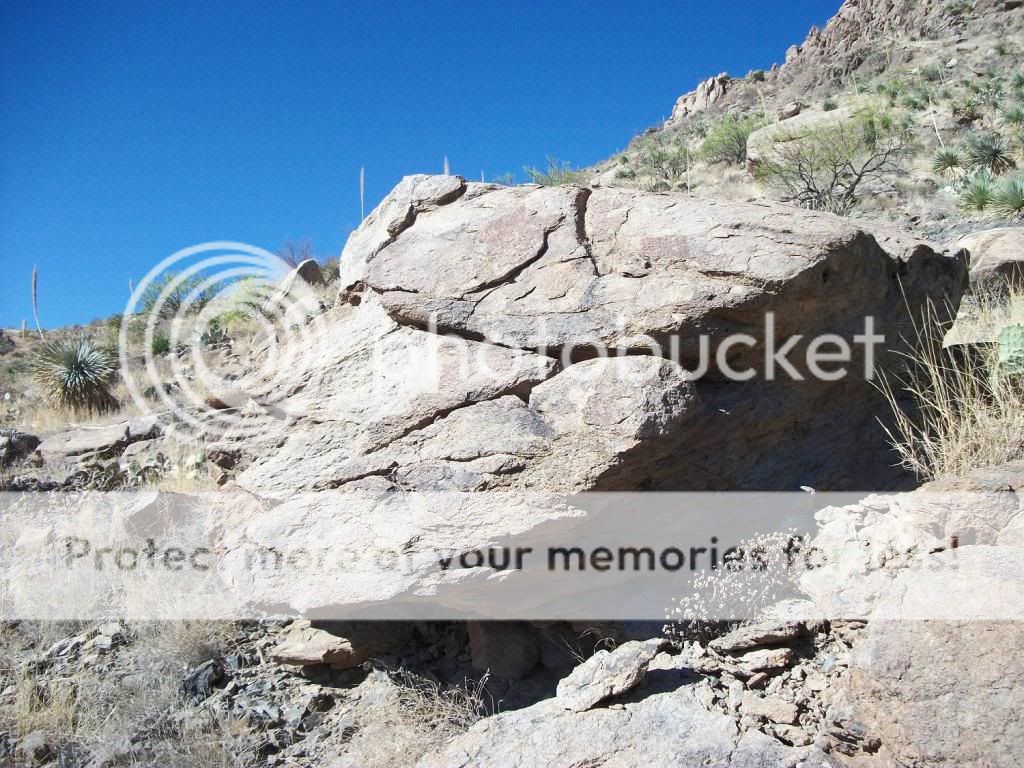

 Has any one read the book sailing to paradise
Has any one read the book sailing to paradise 
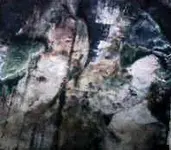
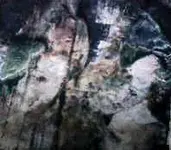
 i believe it is pigments embedded in the sandstone to create a painting.
i believe it is pigments embedded in the sandstone to create a painting.  it acts as a ancient light house for ancient seafaring people.
it acts as a ancient light house for ancient seafaring people.